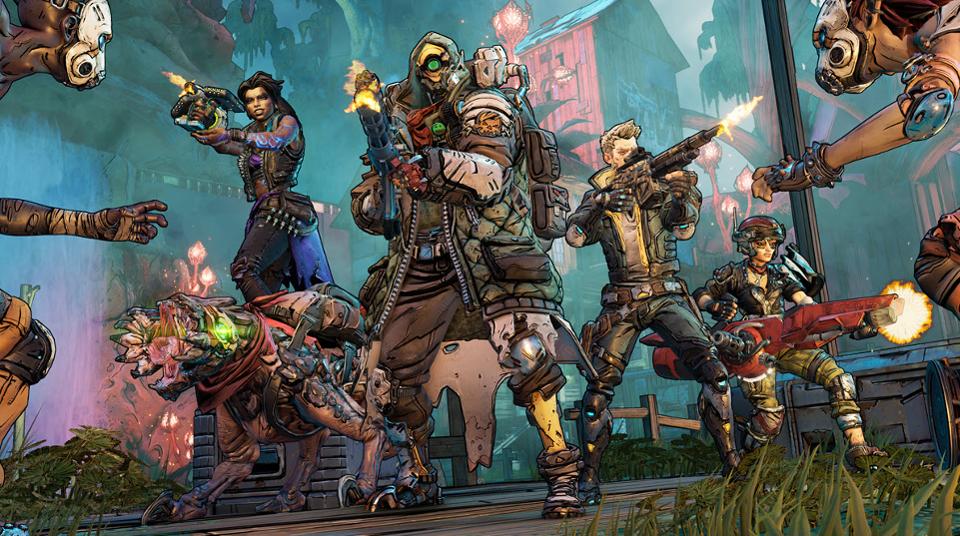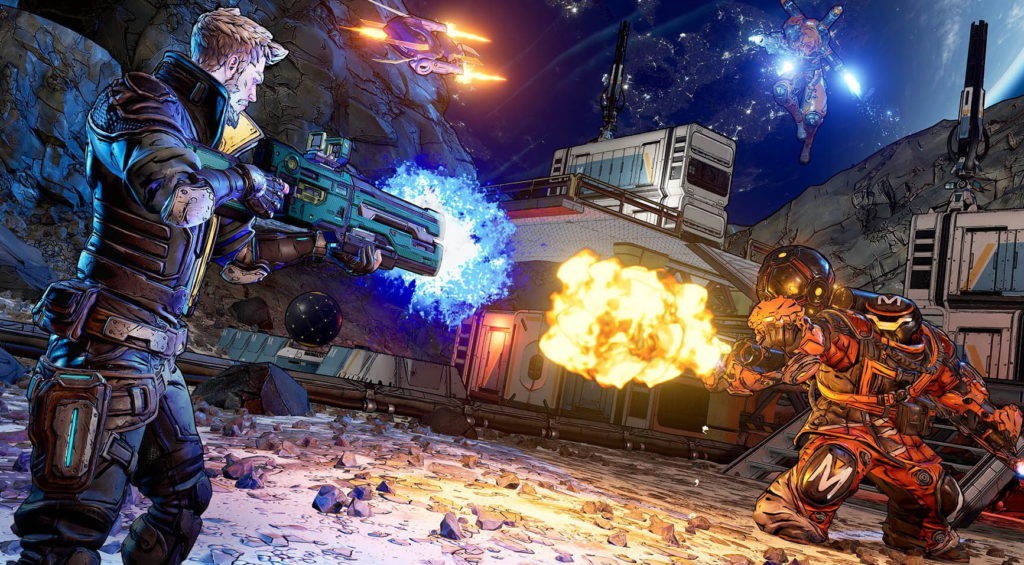It really seems like less than a month has gone by since I first got the chance to first-hand; but here we are already in November, and the game at last has been released commercially.
If you missed the earlier article – which got into the detailed aspects of the gameplay mechanics, as well as the look and feel – I recommend you follow the link and have a read; I’m going to try not to repeat myself too much, even though this is the official review. I thought I’d instead address a few of the more interesting parts of the game in a little more detail.

Borderlands is a Role Playing Shooter, a moniker that may frustrate FPS and RPG purists, but I really think the combination works. The focus is definitely on action and questing, rather than ‘role playing’ as such, but the leveling up aspect, and decisions players can make about which areas of their character to develop, definitely add to the enjoyment (and replayability) of the game.
Not only is Borderlands an amalgam of two different genres, but it also has a very fluid approach to solo and multiplayer gameplay. While you can, of course, play right through in solo mode, you can also host a game at any level, and have your friends join in. With a group, you can choose to all start out at the beginning, or choose instead to kick off the multiplayer mode at the level the host reached in solo mode. It’s great that the approach is flexible, but it also means that to avoid the awkward situation where you have beginning players scrambling to keep up with an advanced host, you’ll need to manage the hosting process a little and arrange for the beginners to host the game. That way they get a challenge (but not too much of one), while the advanced players can act as support.
As a result of this (I think), the characters available to play in the game have a mixture of strengths and weaknesses. Some are great for multiplayer, but may make for a more difficult game if you play solo. For example:
Last time I played, I took on the role of Mordecai, the hunter. For those starting out, or those more interested in solo play, I really couldn’t recommend the character more. With his ranged falcon that he inherits at level five, concealed enemies don’t stand a chance. And that falcon is surprisingly powerful, which means that the bird, not the dude, often takes out even the really strong enemies. It was fun, but at times could feel a bit hands-off.
This time around, I thought I’d play as Lilith, the siren. She’s got some magical vibes going on, but these are primarily to do with using elemental weapons (guns that can light enemies on fire, for example), and something called a phasewalk, which is a strange ‘in-between’ state that Lilith can move into for a short period of time. She’s practically invisible, and can’t be attacked when she’s in phasewalking mode, but unfortunately it doesn’t last long. You can however make improvements to the phasewalking ability with level-up points, so eventually Lilith can heal herself, or even stun enemies, while she’s phasing. I noticed in comparison to Mordecai, Lilith was a bit weaker, and it was often difficult to get through sections of the game that had been a cakewalk for Mordecai, even though my 360 shooting skills have improved since those early days (yay). In that regard she’s probably best utilised as the rogue-type (sneaking around, etc.) in group play, though she’s still definitely able to kick butt and take names with the best of them.

Multiplayer mode was also great for introducing my boyfriend (a gaming noob) to the game. It was easy enough for me to call up a runner with a rocket launcher, put him in the gun turret, and drive him around the arid badlands for a while to let him blow up skags. Multiplayer also has the added bonus of being able to heal your allies, which meant that when he was busy running around in circles and being shot at, I could walk over and heal him, without having to worry about where he would respawn. And if things got a little hairy, he could run back to the safety of the runner.
Another thing I was interested in was how the game would stand up the second time around. Would I be bored replaying the same quest scenarios again? Well, yes and no. While the quests definitely were familiar (and there can be a fair amount of grinding in some of them), I still very much enjoyed myself.
And as for the rest, well, I’m still very impressed with the look and feel of the game, as well as the deceptive simplicity in the game mechanics. The jump-in, jump-out aspect of multiplayer mode is great for people who like to play both solo and multiplayer. And while FPS/multiplayer extremists may find the questing a bit grindy (as one confided to me after a few days of playing), there really is a je ne sais quoi about this game that totally rules. In fact, I’m considering getting another copy for the PC, just so I can play with my other group of gamer friends.